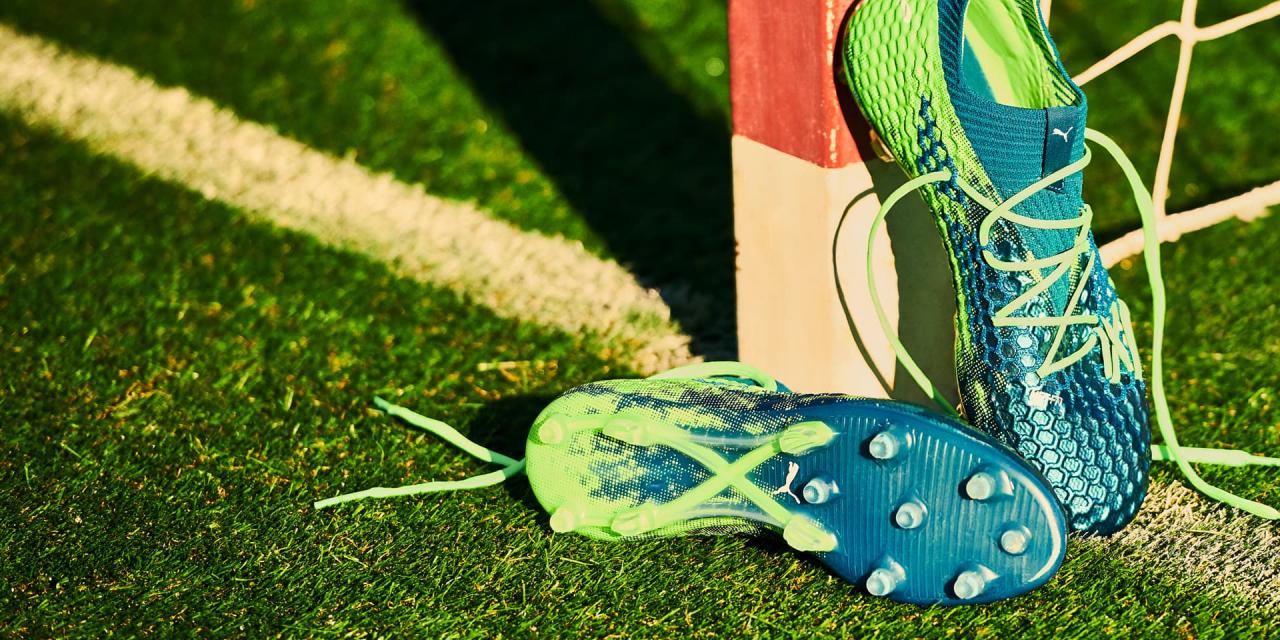

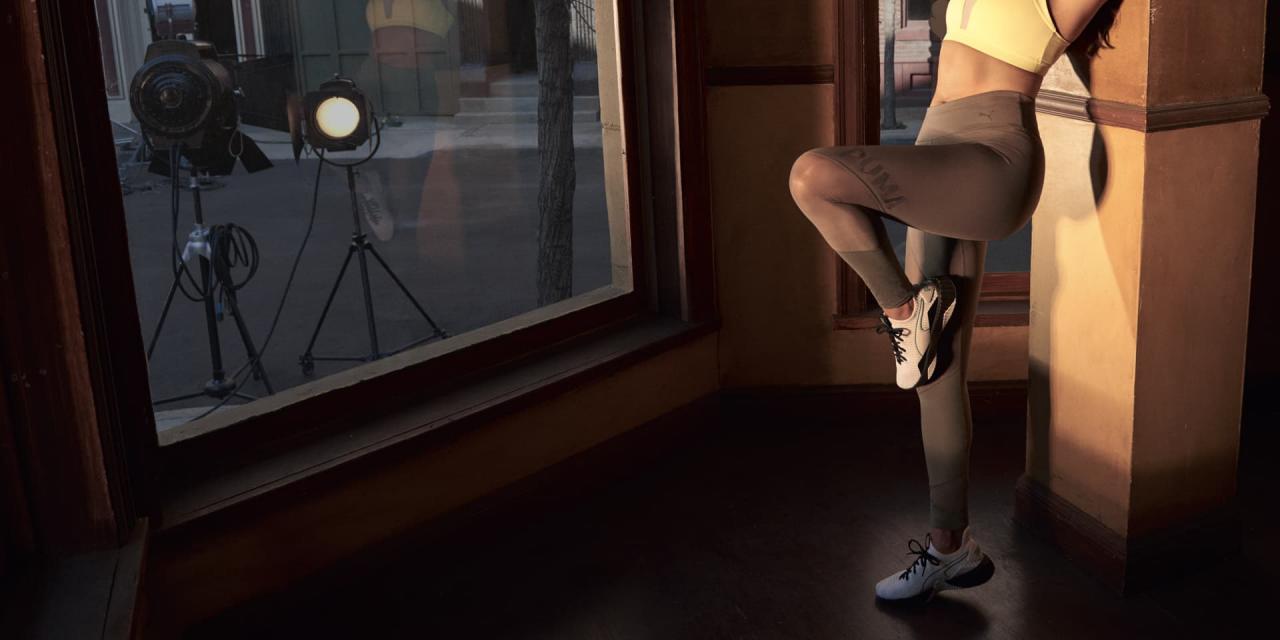
Consolidated sales up 7% currency neutral or 2% in Euro currency
Highlights Q1
- Consolidated sales up 7% currency neutral or 2% in Euro currency
- Gross profit margin at 52%
- BIT up 2% to € 135 million, representing 21% on sales
- EPS at € 6.02 compared to € 5.83
Outlook 2007
- Orders up currency neutral 1.4% to nearly € 1.1 billion
- Management now expects sales and earnings growth in the low single-digits
Sales and Earnings Development
Global branded sales up 9%
PUMA’s worldwide branded sales, which include consolidated and license sales, rose currency neutral 8.9% (3.5% in Euro terms) to € 762.1 million. Footwear sales improved by 9.7% to € 441.4 million, Apparel by 6.1% to € 253.3 million and Accessories by 14.8% to € 67.4 million.
Licensed business increased 15%
The licensed business increased by 15.2% currency neutral (13.3% in Euro terms) to € 106.3 million. The company realized a royalty and commission income of € 9.7 million in the first quarter versus € 8.5 million in the prior year, an increase of 14.0%.
Consolidated sales up 7%
In Q1, consolidated sales grew 7.4% currency neutral (2.0% in Euro terms) to € 655.8 million. Sales in Footwear were up 9.0% to € 413.5 million, Apparel by 4.8% to € 200.7 million and Accessories by 4.7% to € 41.7 million.
Gross profit at 52%
In Q1, gross profit margin reached 52.2% compared to 52.4% last year. The Footwear margin was slightly up from 52.0% to 52.1% and Accessories increased from 53.4% to 54.9%. Apparel reported 51.9% compared to 52.9% last year.
SG&A ratio below last year
In total, SG&A rose 1.0% to € 207.3 million in Q1 2007. As a percentage of sales, the cost ratio decreased slightly from 31.9% to 31.6%. Marketing/Retail expenses were down by 0.8% to € 99.8 million, representing a cost ratio of 15.2% compared to 15.6% in the previous year. Product development and design expenses increased by 3.0% to € 13.1 million and were flat at 2% of sales. Other selling, general and administrative expenses increased 2.7% to € 94.4 million, or slightly from 14.3% to 14.4% of sales.
EBIT margin stable
EBIT increased by 2.0% to € 134.8 million versus € 132.2 million last year. As a percentage of sales this relates to a stable EBIT margin of 20.6%.
Due to an increase in the financial results, pre-tax profit grew by 2.3% to € 137.2 million. The tax ratio was 29.1% versus 29.5% in last year’s quarter.
Earnings per share 3.3% above last year
In Q1, net earnings grew by 3.7%. In absolute amounts, net earnings accounted for € 96.6 million versus € 93.1 million last year. The net return amounts to 14.7% versus 14.5%. Earnings per share reached € 6.02, a 3.3% increase from last year’s € 5.83. Diluted earnings per share were calculated at € 6.01 compared with € 5.78.
Net Assets and Financial Position
Equity ratio at 61%
As of March 31, 2007, total assets climbed by 15.8% to € 1,797.7 million and the equity ratio reached 60.9% after 61.4% in the previous year.
WORKING CAPITAL
Inventories grew 21.4% to € 344.1 million, mainly due to the retail expansion and early deliveries from the Asian production. Receivables were up 9.1%, reaching € 519.2 million. Total working capital at the end of March totaled € 496.1 million compared to € 440.3 million last year.
CAPEX/CASHFLOW
For Capex, the company spent € 16.4 million in Q1 versus € 59.3 million in last year’s quarter, whereas € 1.6 million versus € 41.8 million were related to acquisitions. Free cashflow amounts to € -9.8 million compared to € -135.2 million last year or € -8.2 million versus € -93.4 million excluding acquisition costs.
Cash position
Total cash end of March stood at € 402.4 versus € 354.1 million last year. Bank debts were down from € 68.1 million to € 63.5 million. As a result, the net cash position improved from € 286.0 million to € 338.9 million year over year, but declined since end of December 2006, mainly due to further share buybacks.
Share Buyback/New Subscribed Capital
During Q1, PUMA purchased another 150,000 of its own shares. At quarter-end, 1,270,000 shares were held as treasury stock in the balance sheet, accounting for 7.4% of total share capital.
Effective April 10, 2007 all own shares were cancelled and share capital was reduced accordingly. Including the option rights (Management-Incentive-Program) exercised in April 2007, subscribed capital consists of 16,007,364 shares or € 40,978,851.84 as of today.
Regional Development
Sales in the EMEA-region increased currency adjusted 8.0% reaching € 360.9 million versus € 339.3 million last year, representing 55.0% of consolidated sales compared to 52.8%. Gross profit margin reached 53.7% compared to 55.2% last year. Orders in the EMEA-region were slightly up 0.8% currency adjusted which represents a decline in Euro terms of -0.8% to € 595.3 million.
Sales in the Americas were up currency neutral 4.5% to € 174.3 million. The region now accounts for 26.6% compared to 28.3%. Gross profit margin increased from 47.5% to 49.7%. The order volume decreased 8.6% currency adjusted to € 260.6 million.
Despite the announced consolidation in the US market, sales were only slightly down to $ 156.2 million in Q1. However, orders for US end-of-quarter declined 17.6%, which is mainly due to a business related adjustment with one key account that had seen a significant sales increase in the prior years, as well as a generally moderating environment in the US mall business.
The Asia/Pacific region showed a currency neutral sales increase of 8.6% to € 120.6 million with a strong double-digit increase in China. The total region accounts for 18.4% of sales versus 18.9% last year. The gross profit margin was down from 51.9% to 51.4%. End of March orders on hand were up currency adjusted by 20.0% totaling € 206.9 million.
Outlook 2007
Future orders up 1.4% to nearly € 1.1 billion
Consolidated orders were up currency adjusted by 1.4% to € 1,062.8 million. In terms of product segments, Footwear decreased by 4.5% to € 654.5 million, while Apparel was up 15.4% to € 343.2 million and Accessories 0.1% to € 65.1 million.
Management expects sales and earnings growth in the lower single-digits
Due to the order situation end of Q1, Management now expects for FY2007 sales and earnings growth in the low single-digits. Gross profit margin should range between 50%-51%. Due to already announced and expected investments in relation to the Volvo Ocean Race participation as well as other planned SG&A initiatives, total cost ratio is expected to be around or above 35% of sales. EBIT should therefore develop in line with sales while the tax rate should come in at last year’s level.
Jochen Zeitz, CEO: “We’re pleased to have started Q1 with continued growth despite difficult year-on-year comps. While the remainder of the off-year in terms of major sports events will certainly be challenging given our current order book, we continue to be fully focused on our long-term objectives.”

The Managing Board and the Supervisory Board have based their decision to support the Offer and to recommend to the PUMA Shareholders to accept the Offer on several considerations, including without limitation the following:
- The Managing Board and the Supervisory Board consider the Offer Price of EUR 330,00 per PUMA Share offered by the Bidder to be fair within the meaning of Section 31 para. 1 of the Takeover Act. The Offer Price exceeds the historical market prices of the PUMA Share; furthermore, the fairness of the Offer Price from a financial point of view is supported by the two Fairness Opinions provided by the investment banks Lehman Brothers and UBS. Potential synergies resulting from the future co-operation between PPR and PUMA have not been taken into consideration, it being understood that it is not intended to achieve synergies by way of shutdowns of business locations or reduction of staff.
- By combining the businesses of PUMA AG and PPR Group the market position of PUMA AG as the leading enterprise in the sportlifestyle sector is strengthened in the long term and a platform for the further worldwide development of the Company and the implementation of its business strategy is created. Through the combination with PPR, the PUMA Group does not only secure the support of a financially solid international group, but also profits from the global orientation of PPR Group, its comprehensive portfolio in the premium brand segment and PPR’s know-how and its numerous resources in the areas of international products, sales, multi-brand management, design and procurement. The Managing Board and the Supervisory Board are of the opinion that both groups complement each other very well with respect to their orientation and strategy and that PPR Group, being one of the internationally leading groups in fashion and trade, is an ideal partner for PUMA AG. Therefore, the Managing Board and the Supervisory Board are of the opinion that the completion of the Offer is in the best interest of PUMA AG and the PUMA Group.
- The Bidder has declared that PPR does not plan any staff reduction at PUMA AG as a consequence of its acquisition of control over the Company and that PPR does not intend to endeavour to procure any material changes to the terms and conditions of employment of PUMA AG and the current employee representation and employee structure at PUMA AG.
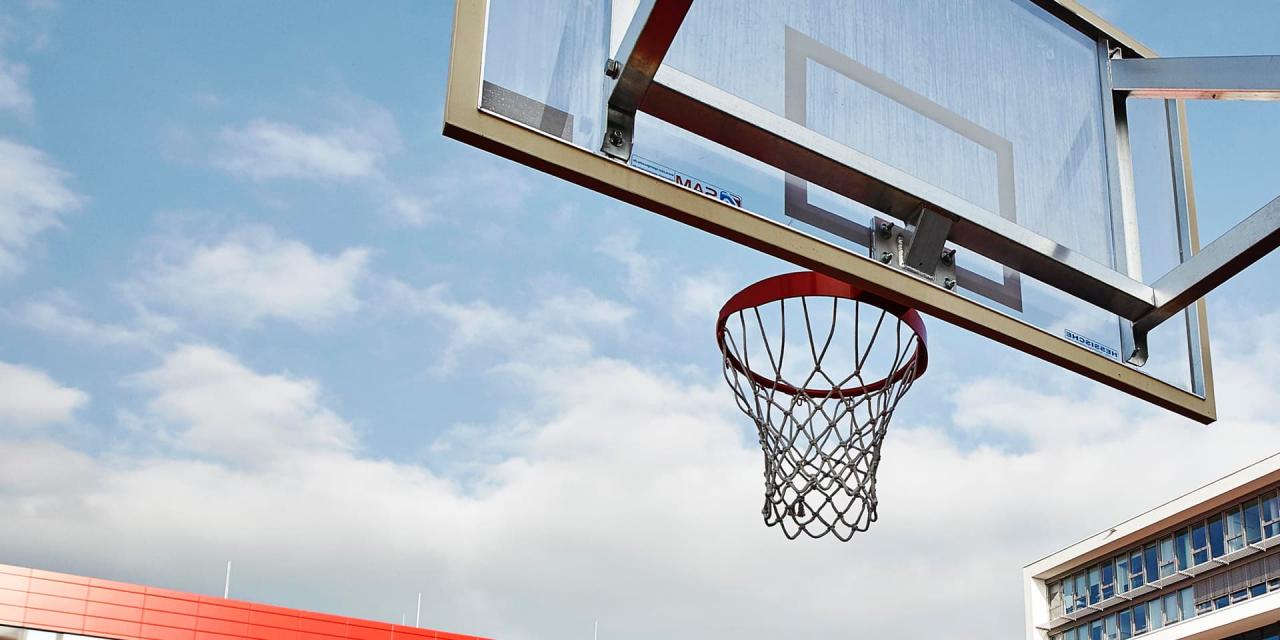
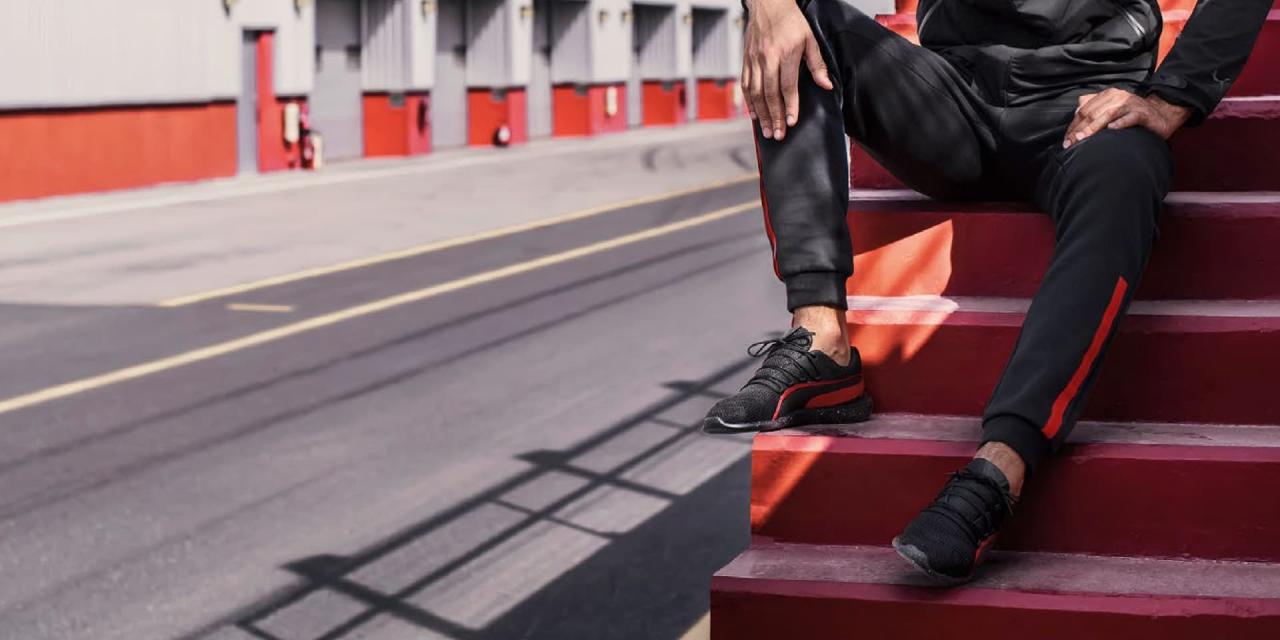
Consolidated sales increase currency adjusted more than 3%
Highlights Q2
- Consolidated sales increase currency adjusted more than 3%
- Gross profit margin above 52%
- EBIT margin 11% versus 13% last year
- EPS at € 2.82 versus € 3.12
Highlights First Half-Year
- Global brand sales at € 1.4 billion
- Consolidated sales up over 5% currency adjusted
- Gross profit margin remains at 52%
- EBIT at € 196 million, representing 16% of sales versus 17% last year
- EPS at € 8.84 compared to € 8.95
Outlook 2007
- Orders up 0.5% currency adjusted
- Management confirms sales and earnings growth in the low single-digits for FY 2007
Sales and Earnings Development
Global brand sales at € 1.4 billion in first half
PUMA’s brand sales, which include consolidated sales and license sales, reached € 621.9 million during Q2, thus marking a currency adjusted increase of 4.2% (0.4% in Euro).
During the first six months, brand sales rose 6.7% currency adjusted (2.0% in Euro) to € 1,384.0 million. Like-for-like, footwear sales increased 5.9% to € 780.2 million, Apparel improved by 7.2% to € 479.0 million and Accessories rose by 10.8% to € 124.7 million.
Licensed business up 12% after six months
In Q2, the licensed business increased by 8.5% currency adjusted to € 79.1 million and by 12.2% to € 185.4 million after six months.
The company realized a royalty and commission income in Q2 of € 8.8 million versus € 7.3 million in the prior year, an increase of 21.4%. Year-to-date, royalty and commission income was up 17.4% to € 18.5 million.
Consolidated sales up more than 5% after six months
In Q2, consolidated sales grew 3.1% currency adjusted. Due to the continued strength of the Euro currency, Sales were slightly down in Euro terms 0.7% to € 542.8 million. In the EMEA and Asia/Pacific regions sales increased currency adjusted in high single-digits, whereby the Americas declined low double-digits versus last year. In total, Footwear was up 1.1% to € 320.9 million, Apparel improved by 6.8% to € 185.6 million and Accessories by 2.7% to € 36.3 million on a currency neutral basis. Sales in Q2 were positively affected by early shipments in June.
Sales in the first six months were up 5.5% currency adjusted to € 1,198.6 million. In segments, Footwear increased 5.5% to € 734.4 million, Apparel 5.8% to € 386.2 million and Accessories 3.8% to € 78.0 million.
Gross profit margin remained at 52%
The gross profit margin reached 52.2% in Q2 and for the first half compared to 51.4% and 51.9% respectively. In the first half, the Footwear and the Apparel margins increased from 51.8% to 52.1% whereby Accessories increased from 53.5% to 53.8%. Due to the continued weakness of the US-Dollar versus the Euro and therefore a better hedge than last year, gross profit margin was positively affected by approximately 100 basis points.
SG&A
SG&A expenses increased in Q2 by 4.6% to € 220.6 million and by 2.9% to € 427.9 million during the first half. As a percentage of sales, the cost ratio increased from 38.6% to 40.6% and from 35.0% to 35.7% respectively. The increase in cost ratio is due to continuous investments in brand and infrastructure according to budget. In addition, some one-time costs were booked in Q2.
For the first half, Marketing/Retail expenses were almost flat and accounted for € 207.4 million or 17.3% of sales. Product development and design expenses rose by 6.2% to € 28.6 million or to 2.4% of sales. Other selling, general and administrative expenses were up 5.5% to € 191.8 million, or from 15.3% to 16.0% of sales.
EBIT at € 196 million
In Q2, EBIT was down by 11.9% to € 61.0 million and by 2.8% to € 195.9 million after six months. This resulted in an EBIT margin of 11.2% and 16.3% respectively.
Including the interest result of € 2.5 million in Q2 and € 4.8 million for the first half, pre-tax profit decreased by 11.0% to € 63.5 million and by 2.3% to € 200.7 million respectively. The tax ratio was calculated at 28.7% versus 29.0% during the six month period.
Earnings per share
Net earnings decreased by 9.9% to € 45.2 million in Q2 and by 1.0% to € 141.7 million in the first half. The net return amounts to 8.3% versus 9.2% and 11.8% versus 12.0% respectively.
Earnings per share in Q2 reached € 2.82 versus € 3.12 last year. Year-to-date earnings per share were down only slightly by 1.2% to € 8.84 compared to € 8.95. Diluted earnings per share were calculated at € 2.81 compared with € 3.03 and € 8.82 versus € 8.81 respectively.
Net Assets and Financial Position
Equity ratio at 60%
As of June 30, 2007, total assets climbed by 20.0% to € 1,830.6 million and the equity ratio reached 60.3% after 63.1% in the previous year.
Working capital
Inventories grew 17.0% to € 389.2 million and receivables were up 12.9%, reaching € 453.8 million. As expected, the inventory situation improved versus the last quarters. The increase in receivables is mainly due to the sales increase in particular in June due to the mentioned early shipments. Total working capital at the end of June totaled € 516.4 million versus 468.5 million last year, an increase of 10.2%.
Capex/Cashflow
For Capex, the company spent € 35.7 million versus € 81.4 million last year, whereas € 4.9 million versus € 47.2 million were related to acquisitions.
Free Cashflow amounts to € 64.5 million compared to € -99.1 million last year or € 69.4 million versus € -51.9 million excluding acquisition costs. Thereof, the company distributed € 39.9 million as dividend and invested € 41.6 million for the share-buy-back program.
Cash position
Total cash end of June stood at € 443.1 versus € 354.5 million last year. Bank debts were up from € 48.5 million to € 59.8 million. As a result, the net cash position improved from € 306.0 million to € 383.3 million year-over-year despite the above mentioned out-flows.
Own Shares/ Subscribed Capital
Effective April 10, 2007 all own shares were cancelled and share capital was reduced accordingly. As of today, the company has no treasury stocks in its balance sheet. Subscribed capital consists of 16,020,964 shares end of period.
Regional Development
Sales in the EMEA-region reached € 282.9 million in Q2, a currency adjusted increase of 9.4%. In particular, the EMEA-region was positively affected by early shipments in June as mentioned above. Year-to-date, sales increased by 8.7% to € 643.8 million.
Gross profit margin reached 53.9% compared to 55.0% last year. Orders on hand were slightly up 0.6% to € 568.1 million. It should be considered that end of June orders already include a higher share of next year shipments versus last year.
As expected, Q2 sales in the Americas were down 11.1% currency adjusted reaching € 145.3 million. First half sales decreased 3.1% to € 319.7 million. The gross profit margin, however, increased by 190 basis points to 49.6%. The order volume was down by 11.8% to € 241.1 million.
Due to the already announced business related adjustment with one key account that had seen a significant sales increase in the prior years, as well as a continuous moderating environment in the US mall business sales in the US market were down 20.3% in Q2 and 10.4% after six months. Orders for the US decreased 16.2% to $ 211.1 million at the end of June.
In Q2, the Asia/Pacific-region increased sales currency adjusted by 9.1% to € 114.5 million and 8.8% in six months reaching € 235.1 million. The gross profit margin was up by 60 basis points and reached 51.2%. Orders on hand were up 20.4% and totaled € 191.9 million with a strong increase in the Chinese market.
Outlook 2007
Orders up 0.5% currency adjusted
Total orders on hand as of June increased currency adjusted 0.5% but decreased in Euro terms 1.8% and totaled € 1,001.2 million. However, a higher share of orders for deliveries in the following year is already included. Orders for the second half of 2007 show a decline of approximately 2% currency neutral.
In terms of product segments, Footwear orders were down by 6.3% currency adjusted to € 616.0 million. Apparel orders increased 16.2% to € 328.8 million and Accessories 1.0% to € 56.3 million.
Management confirms sales and earnings growth in the low single-digits
Management confirms sales and earnings growth in the low single-digits for FY 2007 with an estimated gross profit margin between 50%-51%. Royalty and commission income should only be slightly above last year which is mainly due to the expiration of the license contract in Korea.
The total cost ratio is expected to be around or above 35% of sales mainly due to already announced investments in relation to the Volvo Ocean Race participation as well as other planned SG&A initiatives. As a result, EBIT should almost develop in line with sales providing an EBIT margin nearly on last year’s level. Tax rate is estimated at or around 29%.
Jochen Zeitz, CEO: “We are encouraged by our Q2 results, which show continued growth despite difficult comps due to last year’s World Cup. Even if the year 2007 remains challenging we will continue to invest in brand initiatives in order to tap into the significant long-term brand potential.”
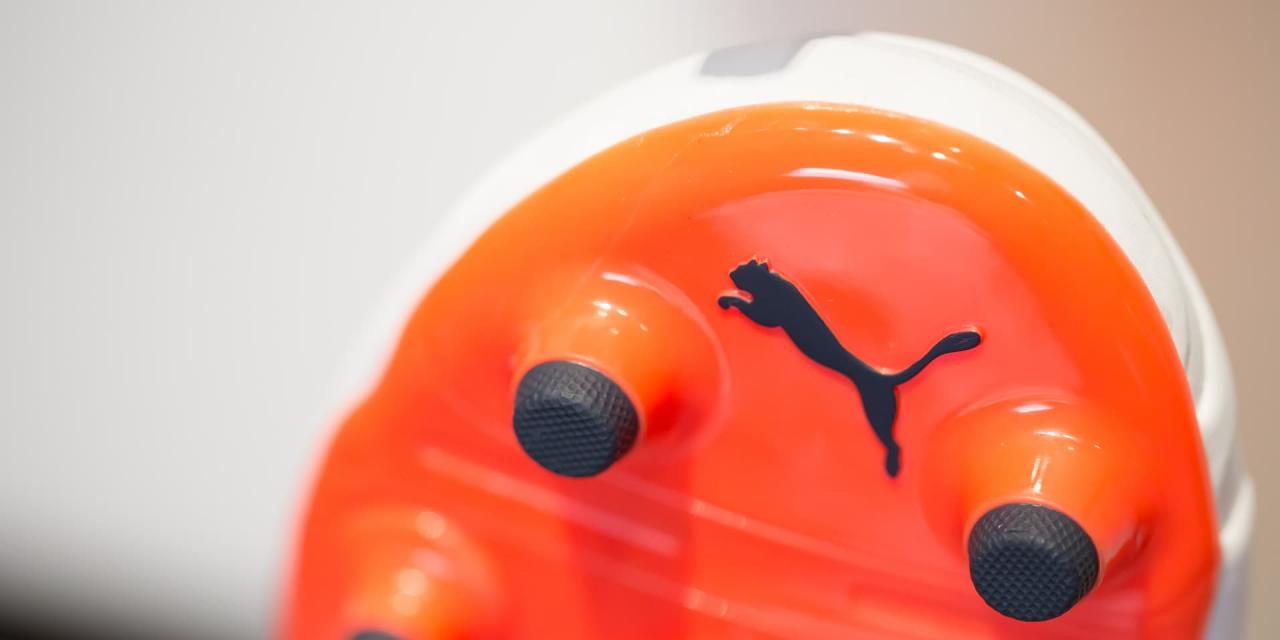
François-Henri Pinault, Chairman and CEO of PPR and Chairman of the Supervisory Board of PUMA:
“We are happy to announce Jochen Zeitz’s appointment to the Executive Committee and the Board of Directors. This step allows the use of the qualitative synergies between the PPR brands and PUMA and therefore further supports the successful collaboration between PUMA and PPR.”
Jochen Zeitz, CEO and Chairman: “I am delighted to have been appointed to the Executive Committee and the Board of Directors of PPR. This step will reinforce PUMA’s position within the PPR Group and the support of PPR’s Executive Committee gives us the possibility to further strengthen our position as one of the most desirable Sportlifestyle companies.”
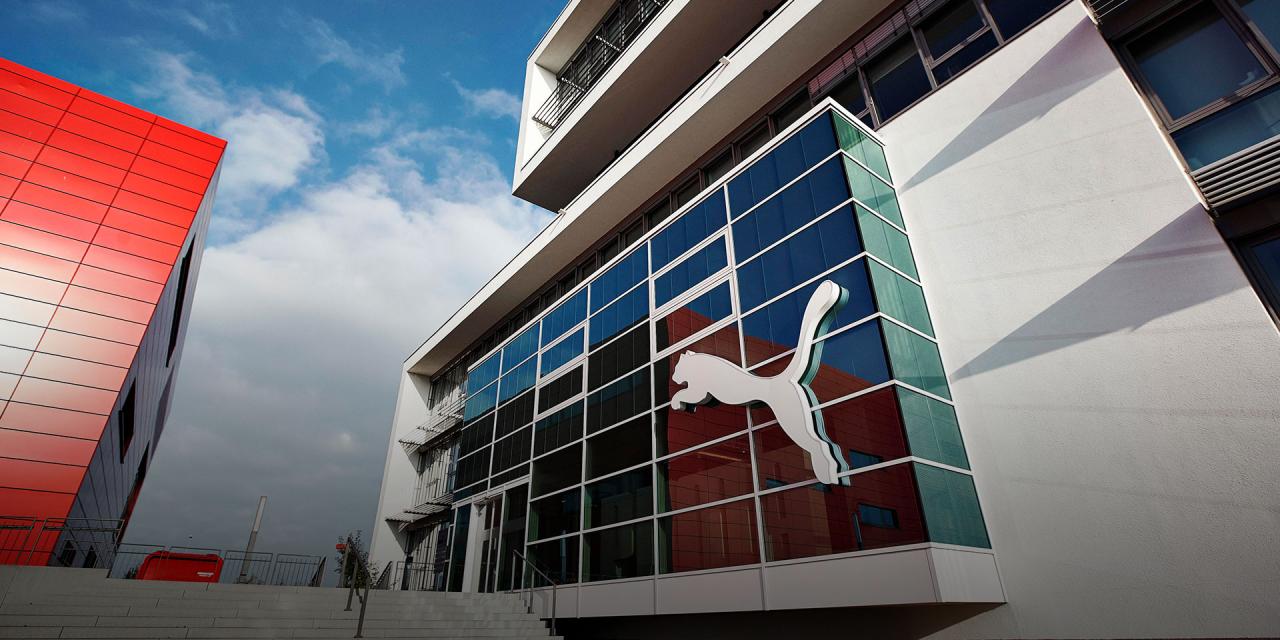
Stefano Caroti previously held a number of senior executive positions at Nike in Sales, Product, Marketing and General Management. Most recently, Stefano was Vice President for EMEA Commerce at Nike’s European headquarters in the Netherlands, where he was responsible for the entire wholesale and retail business in the EMEA region, managing a Euro 4 billion business. Stefano Caroti is Italian, married and has two children. He graduated at Middlebury College in Vermont, USA und started his career in the sporting goods industry in 1985 in Germany.
In addition, as of January 1st, 2008 Antonio Bertone (35), currently Group Functional Director Brand and Marketing at PUMA, will be appointed as Chief Marketing Officer (CMO) and Reiner Seiz (44), currently General Manager Global Sourcing and Logistics at PUMA, will be appointed as Chief Supply Chain Officer (CSO). In their new positions as Deputy Members of the Board of Management both of them will continue to be in charge of their current responsibilities.
Antonio Bertone started working for PUMA’s product and marketing departments in 1994, and since then has become instrumental in the repositioning of the PUMA brand. His creative vision resulted in the introduction of many of PUMA’s Sportlifestyle collections. Today, Antonio Bertone oversees PUMA’s global brand and marketing initiatives.
Reiner Seiz joined PUMA in 1989 in the design and development department and took over his first sourcing assignments in 1993. Today Reiner Seiz is responsible for leading the PUMA World Cat sourcing organizations and with his excellent knowledge of the global sourcing market he managed to build a global sourcing structure and a network of suppliers.
Jochen Zeitz, Chairman and CEO: “We are delighted to welcome Stefano Caroti to the PUMA team. Stefano brings excellent international sales know-how and strong management skills to take on this newly created function as CCO within the Board of Management. With the announcement of Antonio Bertone and Reiner Seiz as Deputy Members of the Board of Management, two additional key functional areas are now well-represented in PUMA’s top management team and will therefore support and strengthen the PUMA brand and company. All three will strongly contribute in supporting PUMA’s global expansion strategy.”
Stefano Caroti, future member of the Board of Management: “I very much look forward to my appointment as Member of the Board of Management and will put in a lot of effort and investment into the new position to capitalize the major opportunities in front of us. I am excited to be working with the PUMA team and contribute to the continued growth of PUMA.”
With this expansion PUMA has successfully completed the re-organization of the Board of Management as part of PUMA’s Phase IV strategy under the leadership of the Chairman and CEO Jochen Zeitz. The current function of the PUMA Group Executive Committee will be terminated.
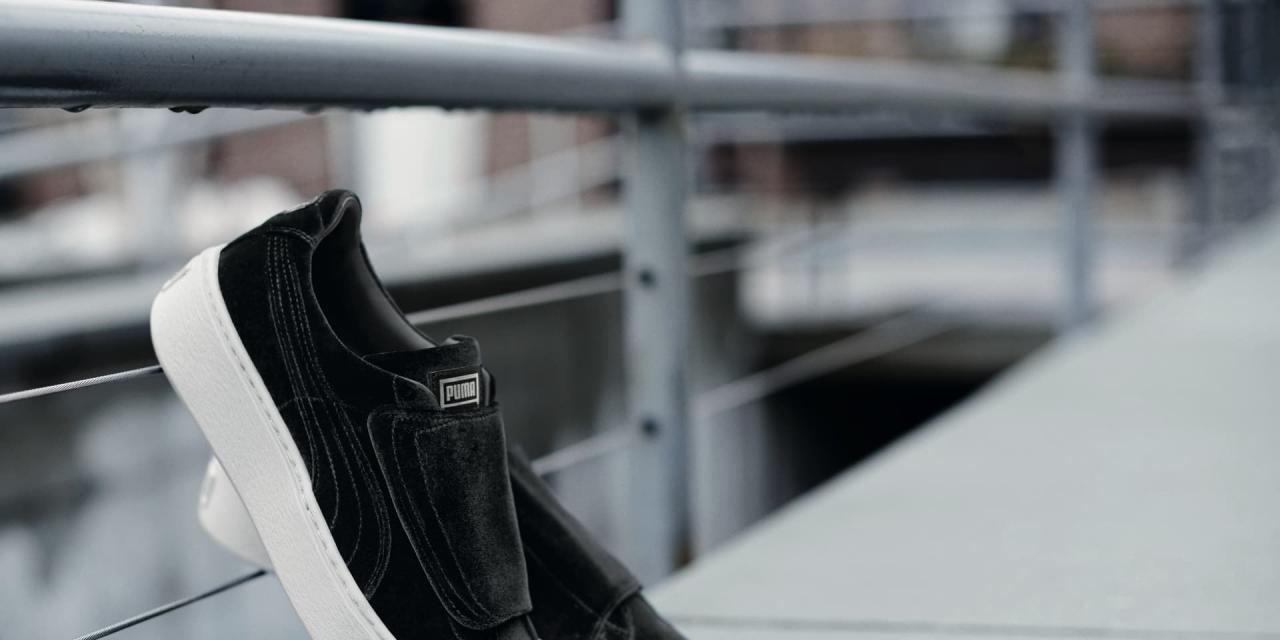
On a total of 84 pages, PUMA presents its extensive activities in the area of social standards, environment protection and restricted substances. The Sportlifestyle company clearly outlines the continuous improvement of S.A.F.E. (Social Accountability and Fundamental Environmental Standards)-activities. Their aim is not only to generate fair working conditions, protect the environment and manufacture ecologically compatible products. An active dialog with different stakeholders (and pressure groups) is also of great importance to PUMA.
TÜV Rheinland certifies that “PUMA has developed a significant and operational management system for environmental and social aspects.” Results of the examination confirm that the Sportlifestyle company successfully implemented the “Code of Conduct”, the “Code of Ethics” and the “Handbook for Environmental Issues”. Those guidelines are generally binding, not only for all PUMA headquarters but also for the 369 independent suppliers and manufacturers named in the report.
The independent environmental organization Greenpeace confirms that PUMA’s commitment sets standards. Greenpeace has checked different companies regarding eco friendliness of their products, ranking them from red to green. After examination of PUMA’s product range, the Sportlifestyle company has obtained the best category “green”. Fair Labor Organization (FLA) is in agreement with this positive appraisal: PUMA has been accredited this year as full member for the first time. FLA is a non-profit organization dedicated to improve working and production conditions. As accredited member, the Sportlifestyle company thoroughly supports the strict guidelines and unannounced audits by FLA.
Jochen Zeitz, CEO and Chairman, PUMA AG: “We are pleased that PUMA’s social and ecological commitment has been recognized not only by analysts and experts, but also by independent organizations such as TÜV Rheinland and Greenpeace. Through responsible and sustainable corporate governance, we want to ensure that our aim to be the most desirable Sportlifestyle company is not only oriented towards economical, but also towards social and environmental criteria.”
In the course of its transparent ecological and social policy, PUMA’s social audits have been seen off by a journalist for the first time, describing his experiences in the Sustainability Report. Bernhard Bartsch, Asia-correspondent for German newspaper Berliner Zeitung and magazine brand eins, characterizes visits of suppliers in Turkey, Vietnam and China. He portrays how PUMA auditors inspect the realization of safety regulations in China or compliance of adequate wages in Vietnamese factories.
Corporate social responsibility is getting ever more important in today’s global business community. For many years now PUMA has continuously improved its S.A.F.E. activities to ensure high social and environmental standards along its entire supply chain. In order to maximise transparency in this sector the company publishes sustainability reports.
The Sustainability Report can be downloaded from PUMA’s website: www.about.puma.com
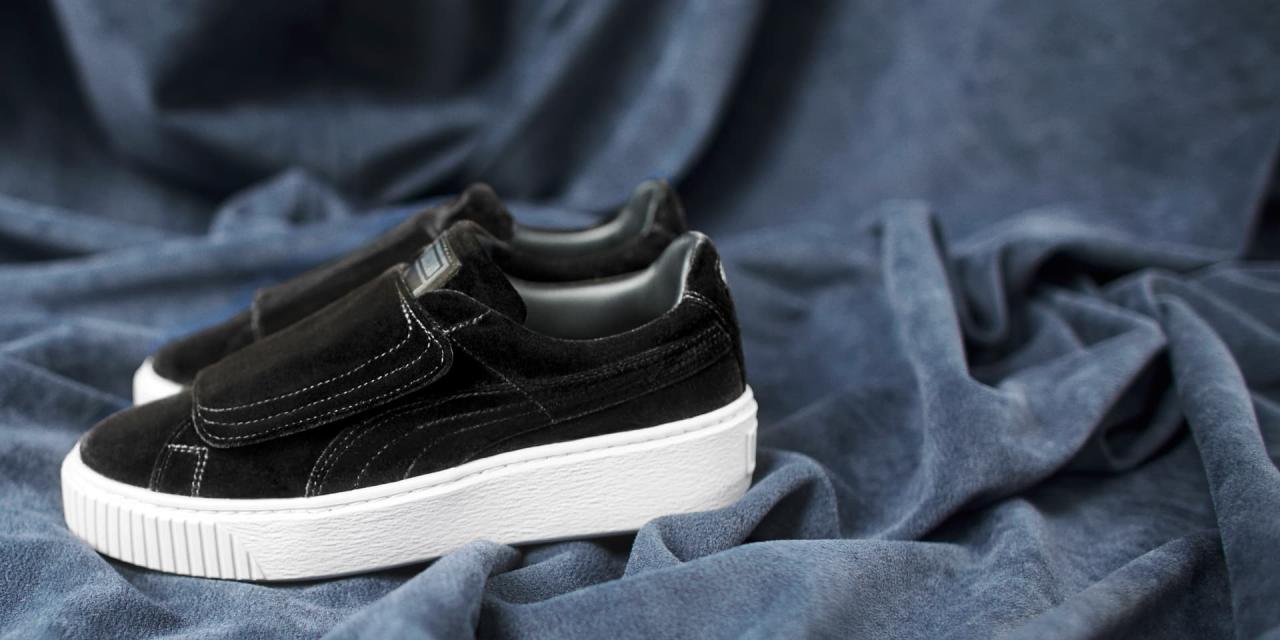
Highlights Q4
- Consolidated sales increase more than 10%
- Gross profit margin on a high level
- EBIT up 21%
- EPS at € 2.40 versus € 2.03
Highlights January – December
- Global brand sales increase more than 3%
- Consolidated sales up almost 5%
- Gross profit margin increases significantly to more than 52%
- EBIT at € 372 million, representing 15.7% of sales
- EPS at € 16.80 compared to € 16.39
Outlook 2008
- Future orders up almost 10%
- Management expects sales and earnings increase in 2008
The year 2007 was a year with only a few events. Nevertheless, most of the targets set were reached and even exceeded in many areas. The Company successfully strengthened its positioning as a desirable sportlifestyle brand, which is as well reflected in the improved gross profit margin.
In 2007, worldwide brand sales were up 3.4% currency adjusted, amounting to € 2.7 billion. On a comparable basis, consolidated sales climbed by 4.7% to € 2.4 billion. The gross profit margin jumped by 170 basis points to over 52%, and operating profit was above last year’s, totalling € 372.0 million. Earnings per share increased from € 16.39 to € 16.80.
Highlights 4th Quarter 2007
In Q4, consolidated sales increased significantly by 10.3% to € 504.5 million on a currency-adjusted basis. Footwear rose by 7.0% to € 277.2 million, Apparel by 14.8% to € 194.7 million and Accessories by 14.0% to € 32.6 million. By regions, EMEA sales increased by 19.9% and Asia/Pacific went up by 14.3% whereas sales in the Americas decreased by 3.3% as expected.
The gross profit margin was at 51.6% 390 basis points up from last year’s quarter. SG&A increased from 38.7% to 40.3% of sales. EBIT rose significantly by 20.7% to € 52.4 million and earnings per share from € 2.03 to € 2.40.
Highlights January – December 2007
Global brand sales growth of more than 3%
PUMA brand sales rose currency-adjusted by 3.4% to € 2.7 billion. Due to the continuing weakness of currencies, particularly of the US Dollar, brand sales in Euros were slightly below last year’s level. By segments, Footwear sales climbed on a comparable basis by 1.9% to € 1,477.9 million, Apparel by 5.7% to € 998.7 million, and Accessories by 3.7% to € 262.2 million.
Licensed business
License sales declined by 3.8% to € 365.3 million on a currency neutral basis. The decrease is attributable to expired licence agreements. On a comparative basis, licence sales rose by approximately 4%. As of 2008, the Korean market will be serviced through the fully-owned subsidiary and will therefore be converted from a licence business into a consolidated business.
Overall, royalty and commission income from license sales amounted to € 35.6 million. This corresponds to 9.7% of license sales compared to 9.6% in the previous year.
Consolidated sales up almost 5%
PUMA succeeded in increasing its consolidated sales for the thirteenth consecutive year, including ten years of double-digit growth. In the 2007 financial year, currency adjusted sales rose by 4.7% to a total of € 2,373.5 million. Currency effects impacted negatively in Euro terms. The currency adjusted sales in the Footwear segment posted a 2.1% increase to € 1,387.8 million. The Apparel segment grew by 8.6% to € 827.3 million. In the Accessories segment sales were up by 7.8% to € 158.3 million.
Expansion of own retail operations is on schedule
Expansion of the Group’s own retailing activities progressed as planned during the 2007 financial year. An additional 25 PUMA concept stores were opened worldwide in 2007, resulting in 116 concept stores at the end of 2007, including two stores operated by licensee. Sales from the Company’s own retail operations grew by 18.0% to € 406.4 million in 2007. The share in consolidated sales rose from 14.5% to 17.1%.
Significant increase in gross profit margin
The desirability of the brand is reflected, in particular, in the gross profit margin. In FY2007, the gross profit margin grew strongly by 170 basis points to 52.3%. In absolute figures, gross profit was up by 3.5%, rising to € 1,241.7 million. According to product segments, the Footwear gross profit margin increased from 50.3% to 52.3% and Apparel from 50.7% to 52.2%. Accessories reached a gross profit margin of 52.8% versus 53.3%.
Investments in the brand continue as planned
Operating expenses rose by 3.5% to € 859.2 million in the 2007 financial year. The cost ratio increased from 35.0% to 36.2% of sales owing to continued scheduled brand investments and infrastructure investments.
Investments in Marketing/Retail totalled € 424.9 million. The cost ratio rose from 17.7% to 17.9% of sales, whereby marketing expenses declined in comparison with the previous year while expenses incurred for retail operations saw a scheduled increase. Product development and design expenses climbed to € 57.5 million, and at 2.4% of sales, remained constant in comparison with the previous year. Other selling, general and administrative expenses rose to € 376.7 million or from 14.9% to 15.9% of sales. The total includes one-off expenses and start-up costs for the new subsidiary in Korea.
EBIT above last year
Operating profit (EBIT) climbed to € 372.0 million from € 368.0 million in 2006. As a percentage of sales, this corresponds to an operating margin of 15.7%, compared to 15.5%.
Like-for-like, the financial result increased strongly from € 6.0 million to € 10.5 million. The financial result includes interest income of € 21.2 million and interest expenses of € 5.3 million. The net interest result corresponds to an average rate of return of 3.9%, compared to 3.1% in the previous year.
Earnings before taxes (EBT) reached € 382.6 million versus € 374.0 million in the previous year. As a percentage of sales this corresponds to a return of 16.1%, compared to 15.8%.
Tax expenses rose to € 110.9 million. The average tax rate was 29.0%, compared to 28.9% in the previous year.
Net Earnings
Net earnings improved by 2.2% to € 269.0 million. This corresponds to a net return of 11.3%, compared to 11.1% in the previous year. Earnings per share amounted to € 16.80, compared to € 16.39, and the diluted earnings per share were € 16.78, compared to € 16.31.
Net Assets and Financial Position
Equity ratio at 62%
As of December 31, 2007 shareholders’ equity rose by 10.1% to € 1,154.8 million. The equity ratio reached 62.0% after 61.2% in the previous year. The balance sheet total climbed by 8.6% from € 1,714.8 million to € 1,863.0 million.
Working Capital
Trade receivables grew by 4.2% to € 389.6 million due to the sales increase in the fourth quarter (+5.0%). Inventories increased by 2.6% to € 373.6 million. The increase is attributable to the order position for deliveries in the first months of the 2008 financial year. The inventory structure was improved significantly in the course of the year, as previously announced. Taking short-term liabilities into account, working capital was € 406.5 million and accounted for 17.1% of sales, after 16.9% in the previous year.
Capex/Cashflow
Cash used for investing activity dropped significantly to € 93.5 million. The decrease is due mostly to the cash used for regional expansion recorded in the previous year. The expansion of PUMA’s own retail operations and current investments account for € 103.4 million, according to plan.
The free cashflow (before acquisition) grew strongly by 138.3% to € 218.3 million. As a percentage of sales, the free cashflow more than doubled from 3.9% to 9.2%.
Regional Development
In spite of the fewer events in 2007 compared to the previous year, solid growth was achieved in the EMEA region. The currency adjusted sales rose by 7.8% to € 1,235.3 million. Nearly all countries in this region contributed to the growth. The EMEA region’s share in consolidated sales rose to 52.0%, compared to 48.9% in the previous year. By product segments, Footwear sales increased by 5.6%, Apparel by 11.6%, and Accessories by 7.4%, on a comparative basis. The gross profit margin reached 53.9% after 53.8% in the previous year. The operating margin (EBIT) accounted for 21.2% of sales, compared to 22.0% in the previous year.
Currency adjusted sales in America declined by 4.3% and amounted to € 641.2 million. The share in consolidated sales decreased from 30.6% to 27.0%. This is largely related to adaptation of the business with a key account customer in the USA, who in the past years had recorded strong growth in sales, and a constant moderate environment in US shopping centers (malls). As a result of these developments, the US market, which is the largest in the region, declined after several years of double-digit growth; in 2007 currency-adjusted sales decreased by 9.5% to a total of USD 561.1 million.
According to product segments in the region, Footwear posted a 5.7% decrease and Apparel declined by 2.6%. Sales in Accessories were up by 11.4%. The gross profit margin grew from 46.1% to 50.7% owing to a significant improvement in the USA. Realization of the announced streamlining of the distribution structure thus impacted very positively on the gross profit margin. The operating margin was 17.6%, compared to 17.4% in the previous year.
In the Asia/Pacific region, currency adjusted sales grew significantly by 10.1% to € 497.0 million. China, in particular, contributed to this positive result. Total region increased its share in consolidated sales from 20.5% to 20.9%. According to product segments, Footwear showed a currency adjusted increase by 11.3%, Apparel by 10.0%, and Accessories by 6.1%. The gross profit margin increased from 49.8% in the previous year to 50.6%. The operating margin was 20.4%, compared to 21.9% in the previous year.
Dividend
For financial year 2007, the Board of Management and the Supervisory Board will propose at the Annual Meeting on April 22, 2008 that the dividend be increased by 10% to € 2.75 per share. Hence, the dividend pay-out ratio moved up from 15.2% to 16.3%, in line with the announced gradual increase during the Phase IV.
In January and February 2007 the Company repurchased a total 150,000 treasury stock or 0.9% of the subscribed capital. The acquisition costs totalled € 41.6 million. With effect from April 10, 2007, the total of 1,270,000 own shares held up to that time were cancelled.
Based on a resolution of the Shareholders’ meeting of April 11, 2007, the Company was again authorized to acquire own shares of up to ten percent of the capital stock by September 1, 2008. The Company made use of this authorization and repurchased a total of 125,000 PUMA shares, or 0.8% % of the subscribed capital, up to the balance sheet date. The amount invested to this end totals € 34.7 million. The share buy back program will be continued in 2008.
Outlook 2008
Significant increase in orders
For the twelfth consecutive time, orders on hand posted growth as of the year-end. At year-end 2007, orders climbed currency adjusted by 9.8% to € 1,187.7 million, due mostly to deliveries for the first and second quarter of 2008.
By product segments, currency adjusted orders for Footwear went up by 4.7% to € 721.1 million, Apparel orders climbed by 19.9% to € 397.7 million, followed by Accessories, which rose by 13.6% to € 68.9 million.
In the EMEA regions, currency adjusted orders were up by 10.2% to € 712.0 million. Orders in the America region dropped by 3.2% to € 241.3 million on a comparable basis. The decrease is due exclusively to the US market. Orders in the Asia/Pacific region rose by 26.0% to € 234.4 million due to a significant increase in the Chinese market, in particular.
Sales and profit increase expected in 2008
Due to the positive orders position, Management expects a currency adjusted single-digit sales growth for the fiscal year 2008.
EBIT is also expected to increase compared to 2007. The operating margin, however, is expected to fall below previous year’s level because of the major sports events and related marketing expenses as well as planned further expansion of the Company’s own retail activities. The tax rate is expected to be at last year’s level.
Jochen Zeitz, CEO: “Although PUMA faced a challenging year, we did not only meet most of our expectations in 2007, but even exceeded them in many points. PUMA had an excellent and successful start into the extraordinary sports year 2008 by winning the African Cup of Nations through Egypt’s win, securing a strong brand visibility on the pitch as the leading equipment supplier. We are determined to make use of all opportunities and chances that offer further growth and we will continue to invest and to strengthen the brand’s as well as the company’s desirability in the long run.”
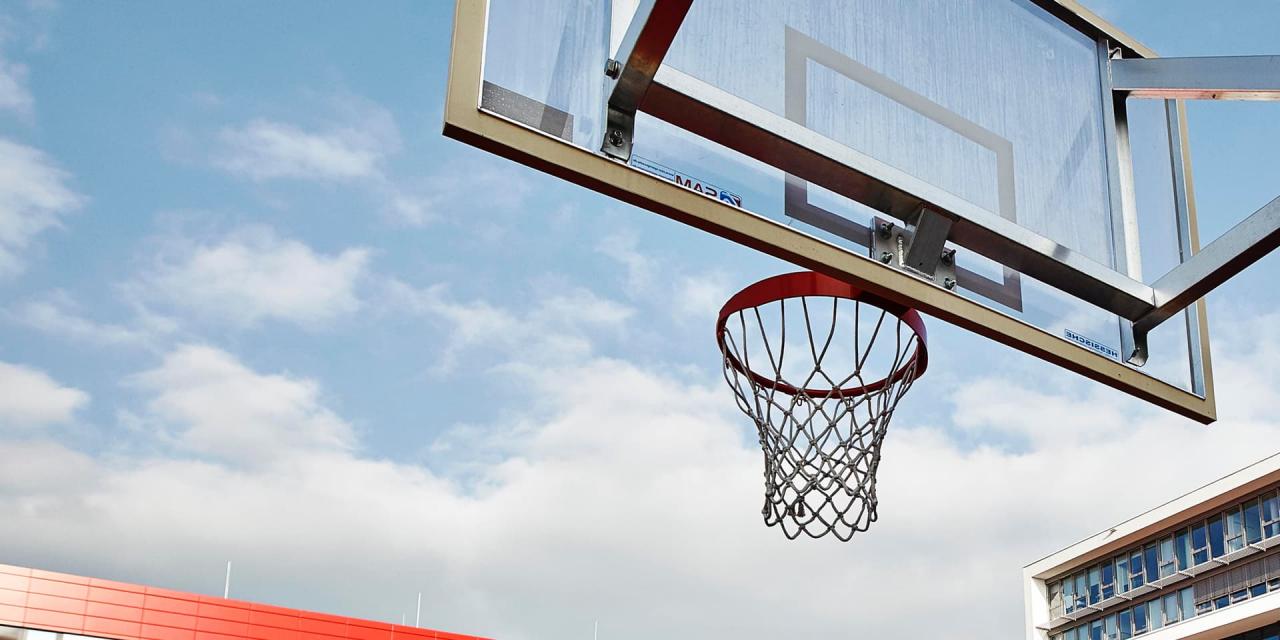
Highlights Q1:
- Consolidated sales up almost 7%
- Strong gross profit margin, up 120 basis points to 53.4%
- Brand investments continue according to plan
- EBIT at € 126 million representing almost 19% of sales versus 21% last year
- EPS at € 5.76 compared to € 6.02
Outlook 2008:
- Orders up currency neutral 12% to nearly € 1.2 billion
- In a challenging market, management confirms a single-digit sales increase on a currency neutral basis
Sales and Earnings Development
Global branded sales
PUMA’s worldwide branded sales, which include consolidated and license sales, rose currency neutral 0.5%. In reporting terms, branded sales reached € 741.2 million versus € 762.1 million due to the strength of the Euro against most of the related currencies.
Footwear sales were down by 4.6% to € 404.1 million. Apparel was almost on last year’s level totaling
€ 246.9 million, and Accessories improved by 36.0% to € 90.1 million.
Licensed business
On a comparable basis, licensed sales were flat. However, due to the take-back of the former license market Korea, the licensed business was down by 35.6% currency neutral to € 67.8 million. Based on the remaining licensed business the company realized a royalty and commission income of € 7.1 million in the first quarter versus € 9.7 million in the prior year.
Consolidated sales up almost 7%
In Q1, consolidated sales grew 6.6% currency neutral (2.7% in Euro terms) to € 673.3 million. Sales in Footwear were almost flat versus last year representing € 394.2 million, with all regions achieving satisfactory performance except the US. Apparel sales improved by 18.5% to € 231.8 million and Accessories by 16.5% to € 47.3 million and all regions contributed with double-digit growth.
Gross profit at 53.4%
In Q1, gross profit margin reached 53.4% compared to 52.2% last year. The Footwear margin was up from 52.1% to 53.4% and Apparel increased from 51.9% to 53.4%. Accessories reported 53.7% compared to 54.9% last year.
SG&A
In total, SG&A rose 9.9% to € 227.8 million in Q1 2008. As a percentage of sales, the cost ratio was at 33.8% versus 31.6% last year.
Marketing/Retail expenses were up by 20.6% to € 120.4 million that was due to higher marketing investments and the Retail expansion as planned. As a percentage of sales, this represents a cost ratio of 17.9% compared to 15.2% in the previous year. Product development and design expenses were down by 11.4% to € 11.6 million, or from 2.0% to 1.7% of sales, mainly due to currency effects. Other selling, general and administrative expenses increased 1.6% to € 95.9 million but declined from 14.4% to 14.2% of sales.
EBIT
EBIT amounts to € 125.8 million versus € 134.8 million last year. As a percentage of sales this relates to a EBIT margin of 18.7% versus 20.6%.
The tax ratio was 28.9% versus 29.1% in last year’s quarter.
Net Earnings/Earnings per share € 5.76
In Q1, net earnings reached € 90.1 million versus € 96.6 million last year. The net return amounts to 13.4% versus 14.7%. Earnings per share were € 5.76 versus € 6.02 last year. Diluted earnings per share were calculated at € 5.76 compared with € 6.01.
Net Assets and Financial Position
Equity ratio above 60%
As of March 31, 2008, total assets climbed by 0.8% to € 1,811.5 million and the equity ratio reached 60.4% after 60.9% in the previous year.
Working capital Inventories grew 5.9% to € 364.5 million, which is in line with or even better than the order growth end of the quarter. Accounts receivables were down 2.5%, reaching € 506.2 million, versus a sales growth of 2.7% during Q1. Total working capital at the end of March totaled € 521.1 million compared to € 496.1 million last year.
Capex/Cashflow
For Capex, the company spent € 24.3 million in Q1 versus € 14,8 million in last year’s quarter, whereas € 6.4 million were related to payment on accounts. In addition, € 16.6 million (last year: € 1.6 million) were financed for acquisition cost.
Due to the mentioned investments and the seasonal higher working capital requirement, free cashflow amounts to € -49.7 million compared to € -9.8 million last year. Excluding investment for acquisitions free cashflow was € -33.0 million versus € -8.2 million.
Cash position
Total cash end of March stood at € 357.2 versus € 402.4 million last year. Bank debts were up from € 63.5 million to € 67.1 million. As a result, the net cash position decreased from € 338.9 million to € 290.0 million year over year whereby € 107.7 million (last year: € 41.6 million) were spent for the share buyback program in the first quarter.
Share Buyback
PUMA purchased another 450,000 of its own shares during the first three months. At quarter-end, 575,000 shares were held as treasury stock in the balance sheet, accounting for 3.6% of total share capital.
Regional Development
Sales in the EMEA-region increased currency adjusted 9.7% reaching € 391.1 million versus € 360.9 million last year, with growth in all categories. The region now represents 58.1% of consolidated sales. Gross profit margin increased to 54.7% compared to 53.7% last year. Orders were up 10.9% currency adjusted to € 644.8 million.
Sales in the Americas were down currency neutral 5.6% to € 148.7 million. Footwear was below last year but accessories and apparel were up double-digit in the quarter. The region now accounts for 22.1% of consolidated sales. Gross profit margin further improved from 49.7% to strong 50.4%. The order book reported a currency neutral increase of 3.2%. In the US market, sales were down 14.2% to $ 134.1 million, affected by the continued moderate environment in the mall-based business. Orders for US end-of-quarter declined 20.8%.
Asia/Pacific reported the strongest growth with solid performance in all categories. Sales increased 13.3% currency neutral to € 133.5 million. The total region accounts for 19.8% of sales. Gross profit margin was strongly up by 160 basis points to 53.0%. Order books reached € 289.7 million, an increase of 23.7% over last year.
Outlook 2008
Future orders up 12% to nearly € 1.2 billion
In comparable terms, consolidated orders were up by 12.1%, or in reporting terms, orders increased 6.5% to € 1,170.4 million. Like-for-like, Footwear was up by 10.2% to € 677.9 million, Apparel improved 14.3% to € 418.2 million and Accessories 18.3% to € 74.3 million.>
Management confirms a single-digit sales increase on a currency neutral basis
Management reaffirms a currency adjusted single-digit sales growth for the fiscal year 2008 despite a continued difficult consumer environment.
During the exceptional sport year 2008 PUMA continues with its marketing investments as planed in order to support the long-term growth potential. The brand investments could affect 2008’s EBIT margin. In a volatile market environment it is difficult to outline the final impact on profitability.
Jochen Zeitz, CEO: “In the midst of an overall economic environment that continues to be challenging, PUMA has shown resiliency in both growth and desirability. Despite a difficult 2008 outlook, we will continue to invest in our planned initiatives to capitalize on major opportunities with global sporting events and fully maximize PUMA’s long-term potential.”
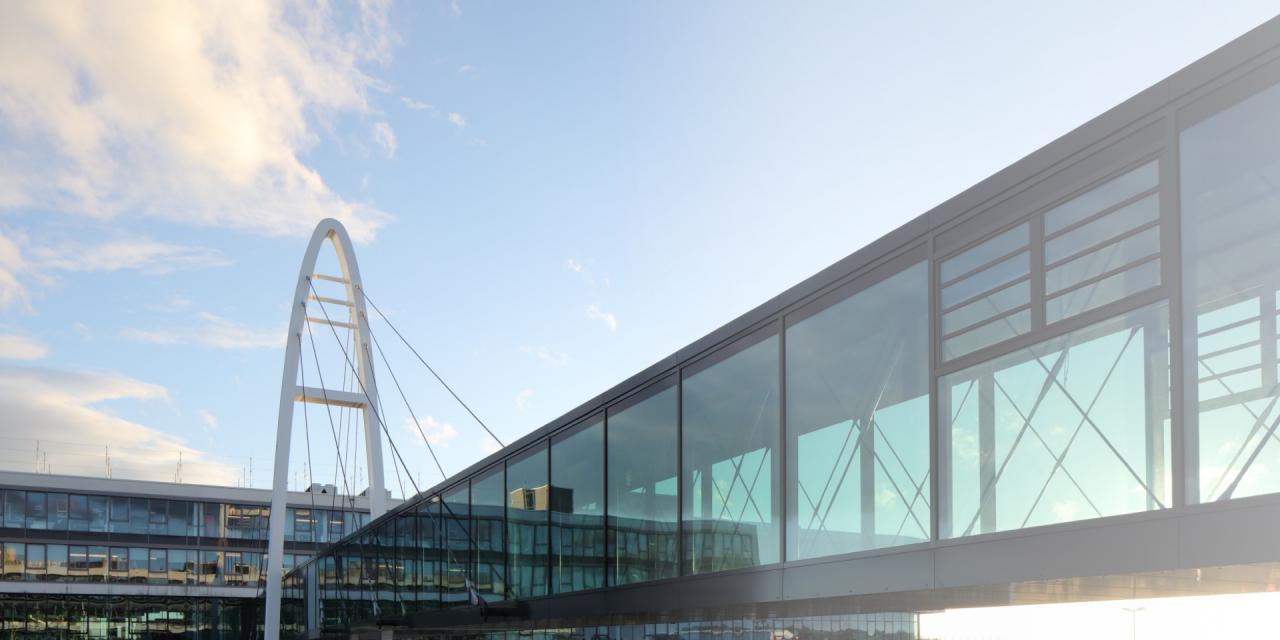
Highlights Q2
- Consolidated sales increase more than 11% currency-adjusted
- Gross profit margin remains above 52%
- EBIT up 2% to € 62 million
- EPS at € 2.98 versus € 2.82
Highlights First Half-Year
- Global brand sales at € 1.4 billion
- Consolidated sales up almost 9% currency-adjusted
- Gross profit margin at 53%
- EBIT at € 188 million
- EPS at € 8.74 compared to € 8.84
Outlook 2008
- Orders up almost 9% currency neutral to € 1,072 million
- Management confirms a single-digit sales increase on a currency neutral basis
Jochen Zeitz, CEO: ”PUMA’s performance in the second quarter improved at a steady pace, ahead of the Q1 progression. Thanks to our scheduled brand investments, consolidated sales were up 11% in the quarter, driven by a solid growth in all regions and categories. I remain confident in PUMA’s ability to achieve another year of top-line growth despite an ongoing difficult global consumer environment.”
Sales and Earnings Development
Global brand sales at € 1.4 billion in first half
PUMA’s brand sales, which include consolidated sales and license sales, reached € 628.9 million during Q2, a currency-adjusted increase of 5.4% or 1.1% in Euro terms.
During the first six months, brand sales rose 2.7% currency-adjusted, reaching € 1,370.0 million versus € 1,384.0 million last year. Footwear sales slightly declined 1.3% to € 735.7 million. Apparel improved by 1.5% to € 472.9 million and Accessories grew strongly by 32.2% to € 161.5 million.
Licensed business
Due to the take-back of the former license market Korea, the licensed business decreased in Q2 by 33.2% currency-adjusted to € 52.1 million and by 34.6% to € 119.9 million after six months.
Based on the licensed sales, the company realized a royalty and commission income of € 6.4 million in Q2 versus € 8.8 million in the prior year’s quarter and € 13.4 million versus € 18.5 million year-to-date.
Consolidated sales up almost 9% after six months
In the second quarter, consolidated sales grew 11.2% currency-adjusted, or 6.3% in Euro terms to € 576.8 million. This shows an improvement as compared to Q1 this year, despite a tough comp basis due to last year’s early shipments. On a currency neutral basis, Footwear was up 7.0% to € 325.1 million, Apparel improved by 14.6% to € 206.3 million and Accessories by a strong 30.3% to € 45.4 million.
Sales in the first six months were up 8.7% currency-adjusted to € 1,250.1 million. In segments, Footwear increased 2.8% to € 719.4 million, Apparel 16.6% to € 438.1 million and Accessories 22.9% to € 92.7 million.
Gross profit margin at 53% in H1
The gross profit margin further improved by 30 basis points to 52.5% in Q2. After six months, gross profit margin was up to 53.0%, an increase of 80 basis points. In the first half, Footwear margin was up from 52.1% to 53.4% and the Apparel margins increased from 52.1% to 52.5%. Accessories reported a margin of 52.1% versus 53.8% last year.
SG&A
Total SG&A expenses increased in Q2 by 5.7% to € 233.1 million and by 7.7% to € 460.9 million during the first half. As a percentage of sales, the cost ratio decreased from 40.6% to 40.4% in Q2 and increased from 35.7% to 36.9% in H1. The increase in cost ratio is due to continuous investments into the brand according to budget.
For the first half, marketing/retail expenses were up by 19.5% to € 247.9 million as planned. Product development and design expenses were down by 13.4% to € 24.8 million or to 2.0% of sales. Other selling, general and administrative expenses were down 1.9% to € 188.3 million or from 16.0% to 15.1% of sales.
EBIT at € 188 million in H1
In Q2, EBIT was up by 2.1% to € 62.3 million, showing a clear improvement versus the first quarter. After six months, EBIT reached € 188.1 million compared to € 195.9 million last year. The EBIT margin was 10.8% versus 11.2% and 15.0% versus 16.3% respectively. The tax ratio was calculated at 28.5% versus 28.7% during the six month period.
Net earnings/Earnings per share
Net earnings increased by 0.9% to € 45.6 million in Q2. In the first half net earnings were down by 4.3% to € 135.7 million. The net return amounts to 7.9% versus 8.3% and 10.9% versus 11.8% respectively.
Earnings per share in Q2 were up 5.7% from € 2.82 to € 2.98. Year-to-date earnings per share were € 8.74 compared to € 8.84. Diluted earnings per share were calculated at € 2.98 compared with € 2.81 and € 8.74 versus € 8.82 respectively.
Net Assets and Financial Position
Equity ratio at 61%
As of June 30, 2008, total assets decreased by 2.7% to € 1,780.8 million and the equity ratio reached strong 60.7% after 60.3% in the previous year.
Working capital
Inventories grew 7.8% to € 419.5 million and receivables were up 4.4%, reaching € 473.6 million. Total working capital at the end of June totaled € 552.1 million versus € 516.4 million last year, an increase of 6.9%.
Capex/Cashflow For Capex, the company spent € 50.6 million versus € 30.8 million last year. The higher investments are mainly related to payment on accounts. In addition, € 19.7 million were financed for acquisitions compared to € 4.9 million.
Free Cashflow excluding acquisitions amounted to € -23.6 million versus € 69.4 million last year.
Cash position Total cash end of June stood at € 288.2 million versus € 443.1 million last year. Bank debts were up from € 59.8 million to € 65.6 million. As a result, the net cash position decreased from € 383.3 million to € 222.6 million year-over-year mainly due to the investments in share buy-backs.
Own Shares
PUMA purchased another 125,000 of its own shares during Q2. As of June, 700,000 shares were held as treasury stock in the balance sheet, accounting for 4.4% of total share capital, a total investment of € 171.4 million.
Regional Development
Sales in the EMEA region reached € 299.6 million in Q2, a currency-adjusted increase of 7.6%. Year-to-date, sales increased by 8.8% to € 690.7 million. The region now represents 55.3% of consolidated sales. Gross profit margin increased 60 basis points to 54.5%. Orders on hand were up 3.5% to € 576.2 million.
Q2 sales in the Americas were up 13.9% currency-adjusted reaching € 146.7 million. First half sales increased currency-adjusted 3.2% and were € 295.5 million. The region now accounts for 23.6% of consolidated sales. The gross profit margin was at 48.9% compared to 49.6% last year. The order volume was up by 14.7% to € 246.2 million. Sales in the US-market were down only 0.9% in Q2 and 8.2% after six months. Sales development improved versus Q1 2008 and outperformed the trend in the order books. Orders for the US end of June improved versus end of March, being now at $ 179.8 million or 14.8% below last year.
In Q2, the Asia/Pacific region increased sales currency-adjusted by 17.0% to € 130.5 million and 15.1% after six months reaching € 263.9 million. The total region accounts for 21.1% of sales. The gross profit margin was strongly up by 240 basis points and reached 53.6%. Orders on hand end of June were up 15.8% and totaled € 249.1 million.
Outlook 2008
Orders up almost 9% currency-adjusted
Total orders on hand as of June increased 8.6% currency-adjusted and totaled € 1,071.5 million, representing a growth of 3.9% in reporting terms.
In terms of product segments, Footwear orders were up by 9.3% to € 638.4 million. Apparel orders increased 7.0% to € 372.1 million and Accessories 11.5% to € 61.0 million.
Management confirms a single-digit sales increase on a currency neutral basis
Management reaffirms a currency-adjusted single-digit sales growth for the fiscal year 2008 despite a continued difficult consumer environment.
PUMA will continue with its marketing investments as planned in order to explore the long-term growth potential. The brand investments could affect 2008’s EBIT margin. In a currently volatile market environment it remains difficult to outline the final impact on profitability.
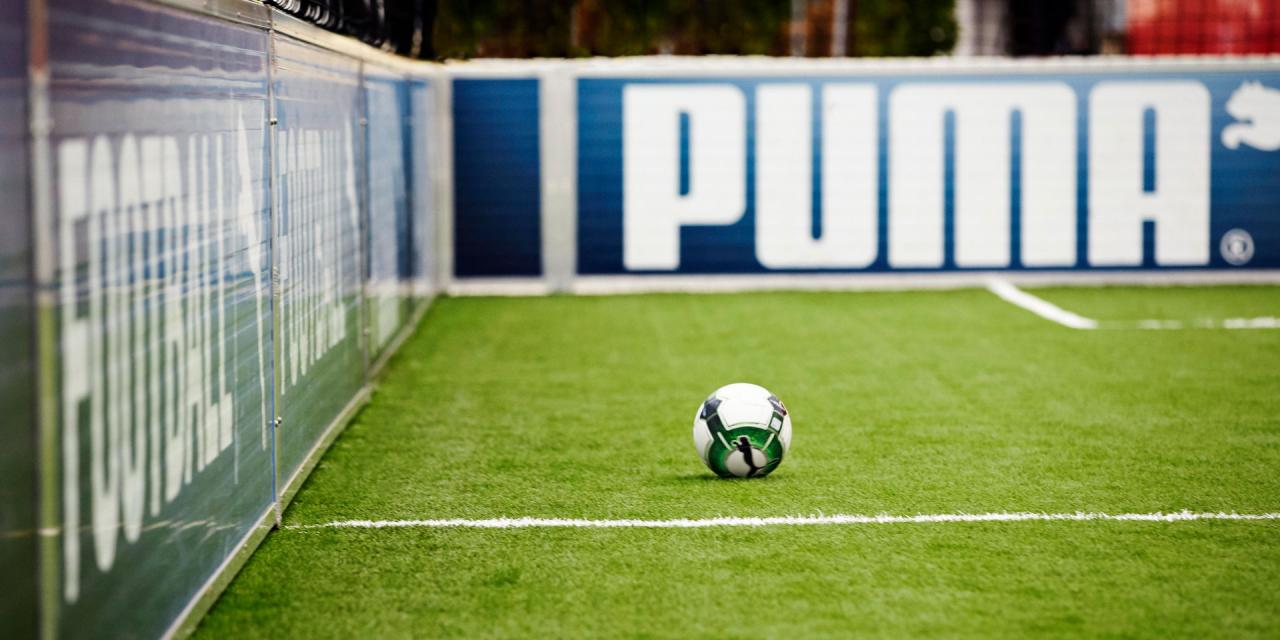
Highlights Q3
- Consolidated sales up more than 9% currency adjusted reaching € 713 million
- Gross profit margin remains on a high level at 53.6%
- EBIT reached € 125 million, up versus last yearEPS increase 4.5% from € 5.56 to € 5.81
Highlights January – September
- Global brand sales above € 2.1 billion
- Consolidated sales up almost 9% currency adjusted
- Gross profit margin above 53%
- EBIT at € 313 million versus € 320 million last year
- EPS at € 14.55 compared to € 14.40
Outlook 2008
- Orders increase 5% to € 1,163 million
- Management raises full-year sales guidance
Jochen Zeitz, CEO: ” Despite the very challenging economic situation and sluggish retail environment, PUMA was able to post another quarter of sales growth. Due to the year to date performance and our order books, we raise our sales guidance for our full-year outlook from a single-digit to a mid to high single-digit currency adjusted sales growth.”
Sales and Earnings Development
Global brand sales
PUMA’s brand sales, which include consolidated sales and license sales, reached € 778.6 million during Q3, thus a currency adjusted increase of 5.9% or 3.3% in Euro terms.
During the nine month period ending September, global brand sales increased currency adjusted 3.8% to € 2,148.6 million. Footwear sales increased 2.4% to € 1,158.1 million and Accessories 28.2% to € 252.6 million. Apparel sales decreased 0.4% to € 737.9 million.
Consolidated sales up 9% currency adjusted
Consolidated sales in Q3 grew 9.2% currency adjusted to € 712.7 million.
By segments, Footwear increased 13.1% to € 412.8 million, Apparel 1.8% to € 245.3 million and Accessories 16.7% to € 54.6 million.
Sales after nine months were up 8.8% currency adjusted to € 1,962.9 million. Footwear improved 6.3% to € 1,132.2 million, Apparel 10.8% to € 683.4 million and Accessories 20.5% to € 147.3 million.
Gross profit margin remains at a high level
In Q3, the gross profit margin increased another 60 basis points reaching 53.6%. After nine months, the gross profit margin remained on a high level at 53.2%. Footwear margin increased from 52.3% to 53.1% and Apparel margin from 52.5% to 53.3%. Accessories reported 53.3% versus 53.9% last year.
SG&A
Total SG&A expenses increased in Q3 by 9.5% to € 249.7 million and by 8.3% to € 710.6 million after nine months. As a percentage of sales, the cost ratio increased from 34.0% to 35.0% during Q3 and from 35.1% to 36.2% after nine months as expected. The higher cost ratio is due to the scheduled brand investments in marketing and retail.
For the nine month period, marketing/retail expenses increased 17.9% and accounted for € 371.1 million, representing a percentage of sales increase from 16.8% to 18.9%. Product development and design expenses were down 12.7% to € 37.6 million or from 2.3% to 1.9% of sales. Other selling, general and administrative expenses were up only 1.2% to € 301.9 million, which reflects a decline from 16.0% to 15.4% as a percentage of sales.
EBIT
In Q3, EBIT increased by 1.0% to € 125.0 million. Due to the aforementioned brand investments, EBIT for the nine months period reported € 313.2 million compared to € 319.7 million. Nevertheless, a strong EBIT margin of 17.5% (LY: 18.5%) and 16.0% (LY: 17.1%) respectively was achieved.
The tax ratio was calculated at 29.0% versus 29.5% in the quarter and 28.7% versus 29.0% in the nine month period.
Net earnings/Earnings per share
Net earnings in Q3 were on last year’s level and totaled € 89.0 million. Due to the brand investments, net earnings were down by 2.7% to € 224.7 million year-to-date. Net return reached 12.5% versus 13.3% and 11.4% versus 12.3% respectively.
Based on average outstanding shares, earnings per share were up 4.5% from € 5.56 to € 5.81 in Q3. Year-to-date earnings per share improved from € 14.40 to € 14.55.
Net Assets and Financial Position
Equity ratio above 62%
Total assets were down by 2.5% to € 1,906.6 million as of September 30, 2008 compared to September in the previous year. The equity ratio further strengthened from 60.0% to 62.3%.
Working Capital
Inventories grew 17.3% to € 432.0 million and include the new consolidation in Korea. Receivables were up 6.1%, reaching € 532.5 million and in line with top-line growth over the last months. Total working capital at the end of September increased 19.4% and totaled € 599.6 million, mainly due to the new consolidation and low liabilities at balance sheet date. On a like-for-like basis, working capital as percent of sales was up only slightly versus last year.
Capex/Cashflow
Total Capex for the nine months period was € 79.1 million compared to € 56.6 million last year. The higher investments are according to plan and related to payment on accounts. In addition, € 24.9 million versus € 4.9 million were financed for acquisition cost.
Free Cashflow (before acquisitions) totaled € 17.2 million versus € 154.3 million last year.
Cash position
Total cash end of September stood at € 297.3 million versus € 532.5 million last year. Bank debts were down from € 69.3 million to € 61.1 million. As a result, the net cash position decreased from € 463.2 million to € 236.2 million year-over-year mainly due to the investments in share buy-backs.
Own Shares
PUMA continued its share buy-back program and purchased another 150,000 of its own shares during Q3. As of September, 850,000 shares were held as treasury stock in the balance sheet, accounting for 5.3% of total share capital, a total investment of € 202.8 million. The shares were purchased during the period beginning November 2007 until September 2008.
Regional Development
Faced with a continued tough consumer environment, the EMEA region reported a solid growth of 4.2% currency adjusted in the quarter, reaching € 388.1 million. Year-to-date, sales increased 7.1% and totalled € 1,078.8 million. The region now accounts for 55.0% of consolidated sales. Gross profit margin showed another improvement and increased from 54.5% to 55.2%. The order book end of September was up 1.1% to € 578.4 million, whereby last years order book was strongly impacted by orders related to the 2008 sport events.
Q3 sales in the Americas were up strong 18.7% currency adjusted reaching € 184.7 million. During the nine months period, sales increased 8.6% currency adjusted to € 480.2 million. The region now accounts for 24.5% of consolidated sales. The gross profit margin was at 48.9% compared to 49.7% last year which was due to a higher distribution business in Latin America. The order volume end of September was up by favorable 20.5% to € 282.4 million.
Sales in theUSoutperformed the order books reported end of June once again and were slightly up in Q3. Sales through nine months were down only 5.4%. Orders end of September turned around and show continuing positive signs, being now up 9.1% to $ 204.7 million.
In the Asia/Pacific region, sales improved 11.9% currency adjusted to € 139.9 million in Q3 and by 14.0% to € 403.9 million year-to-date. The total region accounts for 20.6% of sales. The gross profit margin improved from 50.7% to 53.1%, mainly due to the consolidation of Korean market. Orders on hand were down 0.7% currency adjusted but were up 5.8% in Euro terms and totaled € 302.5 million.
Outlook 2008
Orders up 5%
Total orders as of September increased currency adjusted 4.7% totaling € 1,163.3 million. In Euro currency, orders were up by 5.3%. The orders are mainly for deliveries scheduled for Q4 2008 as well as Q1 2009.
In terms of product segments, Footwear orders are up currency adjusted by 6.8% to € 703.5 million, Apparel by 0.6% to € 393.1 million and Accessories by 8.4% to € 66.7 million.
Management raises full-year sales guidance
Given the results achieved so far this year as well as the order book for Q4, management raises its sales guidance for the full-year outlook from a single-digit to a mid to high single-digit currency adjusted growth.
As already announced, PUMA will continue with its brand investments as planned in order to explore the long-term growth potential.